U.S. auto dealers who survived debacle see record sales
By Korea HeraldPublished : March 18, 2012 - 19:43
Spring Chrysler-Jeep-Dodge-Ram in Houston was one of the fortunate U.S. auto dealers to have survived the industry meltdown of 2008 and 2009.
“It was tough times,” Al Heggs, the dealership’s general manager, said of the period when sales plunged to less than 135 new cars and trucks a month from 300. “You don’t take any solace in the fact that everybody else is suffering. You just got to figure out how to keep yourself above water.”
Beleaguered Spring Chrysler wound up doing that ― and much more. Today, the dealer is raking in the cash and, as it turns out, so are plenty of other survivors. Industrywide per-store dealership profit has almost tripled from 2008.
A 12 percent reduction in the U.S. dealer count since 2008, spearheaded by Chrysler Group LLC and General Motors Co.’s reorganizations and Ford Motor Co.’s restructuring out of bankruptcy, is now translating to record sales and the highest profit in at least five years. That’s allowing dealers who survived to re-hire salesmen and technicians, spend aggressively on store renovations and boost spending on local advertising.
“This was always an excellent business, a resilient business, and now it’s just about in as good shape as it’s been in for decades,” John Casesa, senior managing director at Guggenheim Securities LLC in New York and a former auto dealer, said in a phone interview. “The businesses are just humming.”
Employment at vehicle and parts dealers has increased in 19 consecutive months, according to the Bureau of Labor Statistics in Washington. The industry employed about 1.72 million as of February, from 1.61 million at the nadir of February 2010.
“It was tough times,” Al Heggs, the dealership’s general manager, said of the period when sales plunged to less than 135 new cars and trucks a month from 300. “You don’t take any solace in the fact that everybody else is suffering. You just got to figure out how to keep yourself above water.”
Beleaguered Spring Chrysler wound up doing that ― and much more. Today, the dealer is raking in the cash and, as it turns out, so are plenty of other survivors. Industrywide per-store dealership profit has almost tripled from 2008.
A 12 percent reduction in the U.S. dealer count since 2008, spearheaded by Chrysler Group LLC and General Motors Co.’s reorganizations and Ford Motor Co.’s restructuring out of bankruptcy, is now translating to record sales and the highest profit in at least five years. That’s allowing dealers who survived to re-hire salesmen and technicians, spend aggressively on store renovations and boost spending on local advertising.
“This was always an excellent business, a resilient business, and now it’s just about in as good shape as it’s been in for decades,” John Casesa, senior managing director at Guggenheim Securities LLC in New York and a former auto dealer, said in a phone interview. “The businesses are just humming.”
Employment at vehicle and parts dealers has increased in 19 consecutive months, according to the Bureau of Labor Statistics in Washington. The industry employed about 1.72 million as of February, from 1.61 million at the nadir of February 2010.
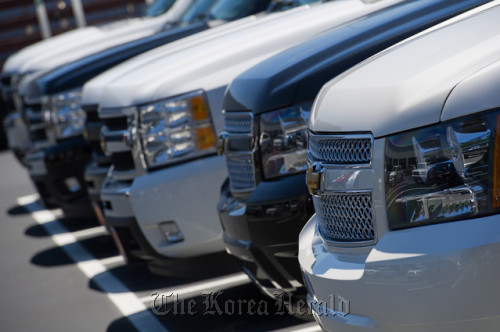
Adding employees
Brian Hamilton, principal of Chevrolet-Buick-Cadillac and Chrysler-Dodge-Jeep stores in Kearney, Nebraska, said he’s added at least 10 new employees recently as technicians and in his sales and parts departments.
“The real dark times were darker because we were also a wind-down dealer, meaning we were going to lose our Buick and Cadillac franchises,” Hamilton said in a phone interview. “We didn’t have those cars for about nine months.”
Hamilton and hundreds of other dealers went to arbitration with Detroit-based GM and Auburn Hills, Michigan-based Chrysler. Some of those dealers were allowed to keep their franchises, and like Hamilton did with both stores, are now remodeling them.
More than 3,400 GM-brand dealerships in the U.S. are undergoing upgrades and renovation, investing about $3 billion, Alan Batey, Chevrolet vice president of sales and service, said before the National Automobile Dealers Association convention in February. GM expects dealers will complete the overhauling of their stores with features like new exterior entrances, brighter showrooms and free Wi-Fi by 2016, he said.
Dealer’s investment
Bill Perkins, a Chevrolet dealer with stores in Eastpointe and Taylor, Michigan, said he’s spending about $2.5 million to upgrade his facilities under GM’s Essential Brand Elements initiative. Perkins said the most recent major renovation he made to either of the stores was in 2003.
About half of auto dealers’ costs are variable and can be pared when sales fall off, said Guggenheim’s Casesa, who was an analyst covering auto manufacturers and retailers at Wertheim Schroder & Co. and Merrill Lynch & Co. from 1989 to 2006. He owned three dealerships from his retirement as an analyst until 2009, when he became an investment banker.
“Once these guys were able to catch their breath, they were able to reduce their cost base,” Casesa said. “Once they were able to adjust and volumes rebounded, the profitability has been almost off the charts.”
Per-dealer profits
The average U.S. auto dealer earned a pretax profit of $785,855 last year on revenue of $34.7 million, according to the McLean, Virginia-based National Automobile Dealers Association, which represents 16,000 new-car dealers. Dealers’ average pretax profit was $279,685 in 2008.
“Once I got through ‘08, I said man, I can really make some money if the market starts to pick up,” Perkins, the Michigan dealer, said in a phone interview.
GM and Chrysler’s bankruptcy plans called for eliminating more than 2,200 dealers as part of their 2009 reorganizations. U.S. automakers have shrunk their networks to avoid having their dealers compete with each another in the same markets and to boost profitability of remaining outlets.
The dealership closings led to congressional hearings and drew criticism from the Special Inspector General for the Troubled Asset Relief Program, which said that the Treasury Department should have considered the job losses.
‘Part of the problem’
The cutting of dealers by GM and Chrysler was necessary, Mark Zandi, chief economist of Moody’s Analytics Inc. in West Chester, Pennsylvania, said in a phone interview.
“The dealer network was part of the problem,” said Zandi, who testified in favor of the government rescuing GM and Chrysler in the U.S. Senate in December 2008. “It was bloated and had not rationalized to weakening levels of sales. It’s now rationalized, restructured and meddle-tested. They have gone through a wrenching process.”
A smaller dealer network is working for GM and Chrysler. More than 90 percent of GM’s dealers were profitable in 2011, up from 57 percent in 2008 and the highest since the mid-1970s, said Tom Henderson, a company spokesman. Chrysler said in a regulatory filing last week that 86 percent of its dealers in the U.S. reported being profitable last year, up from 49 percent in 2008.
U.S. auto sales per dealer may rise about 9.2 percent to 785 vehicles this year, surpassing the record of 784 vehicles in 2005, dealership consultant Urban Science said in its annual Automotive Franchise Activity Report released last month. The firm has compiled the report since 1990.
Acquisition activity
Improved sales and profitability at domestic dealerships has expanded the number of appealing acquisition targets for privately held and publicly listed auto retailers, Alan Haig, managing director at advisory firm Presidio Automotive in Chapel Hill, North Carolina, said in a phone interview.
“If you’re a buyer, your menu of attractive acquisition targets is much broader than it has been, I would say since the mid-1990s, before the domestics started to go into their long slide in market share,” said Haig, who previously oversaw acquisitions at AutoNation Inc., the largest U.S. dealer group.
Executives at AutoNation, Penske Automotive Group Inc., and Group 1 Automotive Inc. have all said they’re pursuing acquisitions. Roger Penske, chief executive officer of Penske Automotive, has said more dealers are interested in selling their businesses because of the high cost of facilities upgrades automakers are seeking.
Retiring Owners
Acquisition activity also will be bolstered by sellers who have put off transactions during the three-year period ending in 2010, when the number of transactions fell to the lowest in more than a decade, Presidio’s Haig said.
“For owners who are at retirement age, the last four years has been fairly difficult to exit your business,” he said. “The price that a seller could get today may be about the same as what they might get in a few years, because the closer we get to a peak in the economic cycle, the more likely the multiple a buyer will pay is going to contract a bit.”
Heggs, the Houston dealer, said that in addition to losing competitors in his store’s vicinity, new product from Chrysler has helped sales. Chrysler introduced 16 new or refreshed vehicles in the first 19 months since Turin, Italy-based Fiat took control of the company. “For a good 18 months, Chrysler didn’t have any new product coming down the pipeline that people were eager to get to,” Heggs said in an interview. “Grand Cherokee used to be one of the most unrefined vehicles. When it got redesigned, it blew off the walls. The 300 is a huge, huge vehicle that moves for us. And trucks ― Texas is truck land.”
(Bloomberg)
-
Articles by Korea Herald




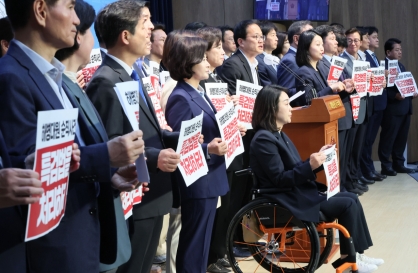


![[KH Explains] How should Korea adjust its trade defenses against Chinese EVs?](http://res.heraldm.com/phpwas/restmb_idxmake.php?idx=644&simg=/content/image/2024/04/15/20240415050562_0.jpg&u=20240415144419)



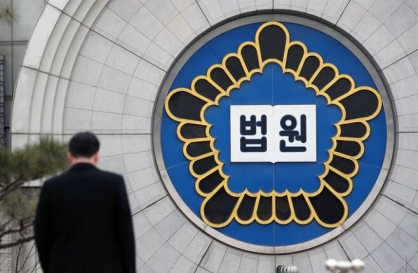



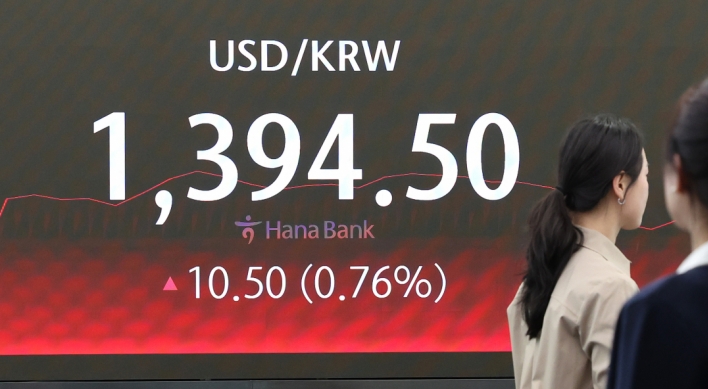


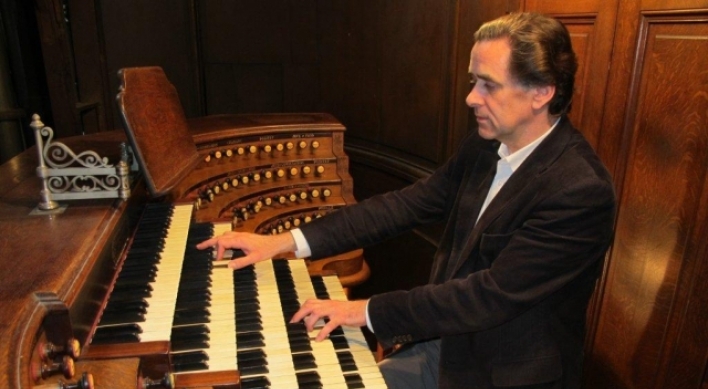
![[Today’s K-pop] Stray Kids to return soon: report](http://res.heraldm.com/phpwas/restmb_idxmake.php?idx=642&simg=/content/image/2024/04/16/20240416050713_0.jpg&u=)